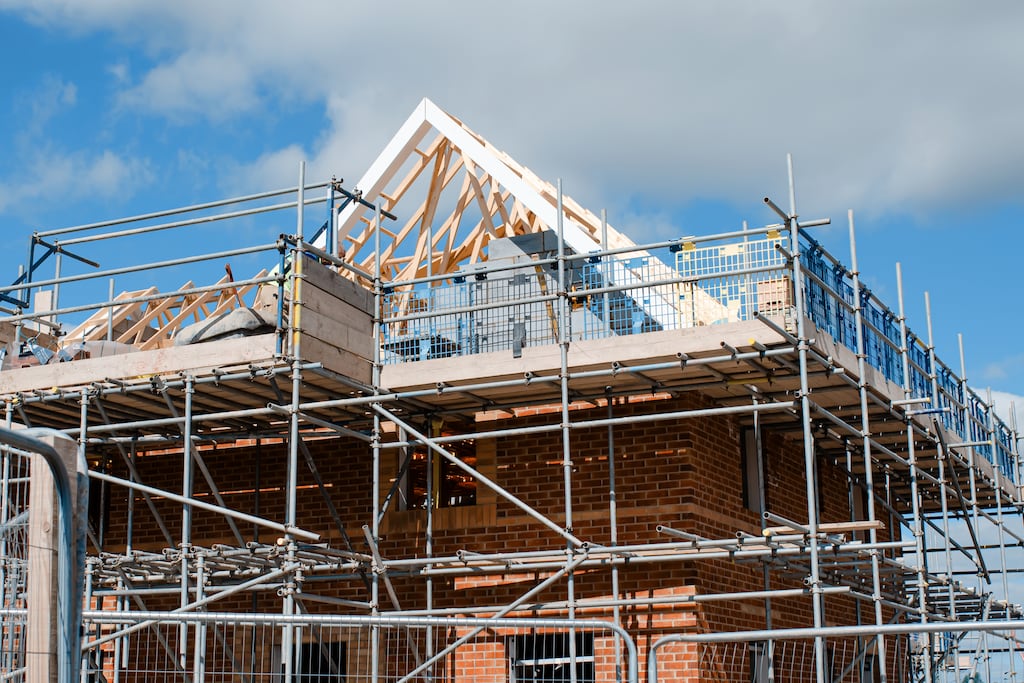The housing shortage is one of the biggest problems we face and it reflects how our population has grown rapidly over recent decades. In the six years to 2022 alone, our population grew 8 per cent.
The housing challenge is much less acute in other European countries, where there is a much better balance between the numbers of young people entering the housing market and the number of older people exiting housing when they die. Across Europe, on average about 80 per cent of 25-year-olds entering the housing market can be accommodated in vacancies arising from such exits: in Ireland, we can only cater for about 57 per cent of new housing entrants through natural vacancies.
That imbalance between the size of our young population and our older population means we need to build a lot more homes.
Because it has taken so long to ramp up house building since the financial crisis at a time when the economy and the population were already growing rapidly, the Housing Commission estimates that there is a lot of catching up to do. Last year we built more than 30,000 new homes but over the coming decade the commission suggests a need for up to 56,000 a year to reduce the backlog.
The Commission on Housing provides many valuable recommendations on how to ramp up supply, which, if implemented, could ease the serious pressures, but financing new building on this scale will be a big challenge.
In 2022 the Government invested €3.3 billion in housing, about 3 per cent of its total budget, but the commission proposals suggest this figure should rise closer to €5.3 billion. The extra cost of this would represent about 0.7 per cent of national income.
Undoubtedly this will mean raising more revenue to cover the cost at a time when there are also increasing financial demands on government to cover ageing and tackling climate change. It makes sense to use taxes on those already housed to help fund extra spending on housing for those who have none. One mechanism could be by raising the local property tax.
If it will be challenging to pay for additional public sector housing investment over the coming decade, it will be a bigger challenge to raise the necessary private finance to fund new building and the purchase of those homes in the private market. An estimated €8 billion a year of private finance will be needed.
Given that the net increase in mortgage lending last year was €1.3 billion, the banks would need to lend more than six times as much as they did last year to get to that target.
The total amount of mortgage finance outstanding on all homes last year was €84 billion. If the target level of housing supply was maintained over a sustained period, as suggested by the Housing Commission, the mortgage books of the Irish banks would have to double by early in the 2030s. Irish banks just do not have the capacity to lend on that scale, and households don’t have the wherewithal to fund their share.
As has happened in cities such as Stockholm and Berlin, rent controls have led to major cuts in such investment, and have reduced the supply of rental accommodation
This issue of the capacity of the household sector and the banking system to finance a big expansion in housing in Ireland was first raised in 2016 by Kieran McQuinn and ESRI colleagues.
Because of the gradual nature of the increase in housing supply since then, this financing constraint has not yet been a brake. However, given the ambitious scale of housing investment envisaged by the commission, a big obstacle over the coming decade will be how it is to be financed. That could potentially choke off the needed growth of supply.
That is why the Housing Commission recognised that much of the extra finance needed will have to come from abroad. Foreign lenders are reluctant to enter the Irish mortgage market, because repossession is difficult, so they see it as risky. So foreign capital is more likely to invest in rental housing.
On that, the Housing Commission’s majority recommendation for a continuation of rent controls, albeit in a modified form, seems contradictory. As has happened in cities such as Stockholm and Berlin, rent controls have led to big cuts in such investment, and have reduced the supply of rental accommodation. Three members dissented from the recommendations on rent controls, and argued this was “inconsistent with the conclusions of the commission elsewhere in the report”.
If investors are dissuaded from providing new rental housing because of continuing rent controls, that will hamper new supply, and push up rent on new lettings. That means those who need to rent somewhere to live will lose out.
- Sign up for Business push alerts and have the best news, analysis and comment delivered directly to your phone
- Find The Irish Times on WhatsApp and stay up to date
- Our Inside Business podcast is published weekly – Find the latest episode here















